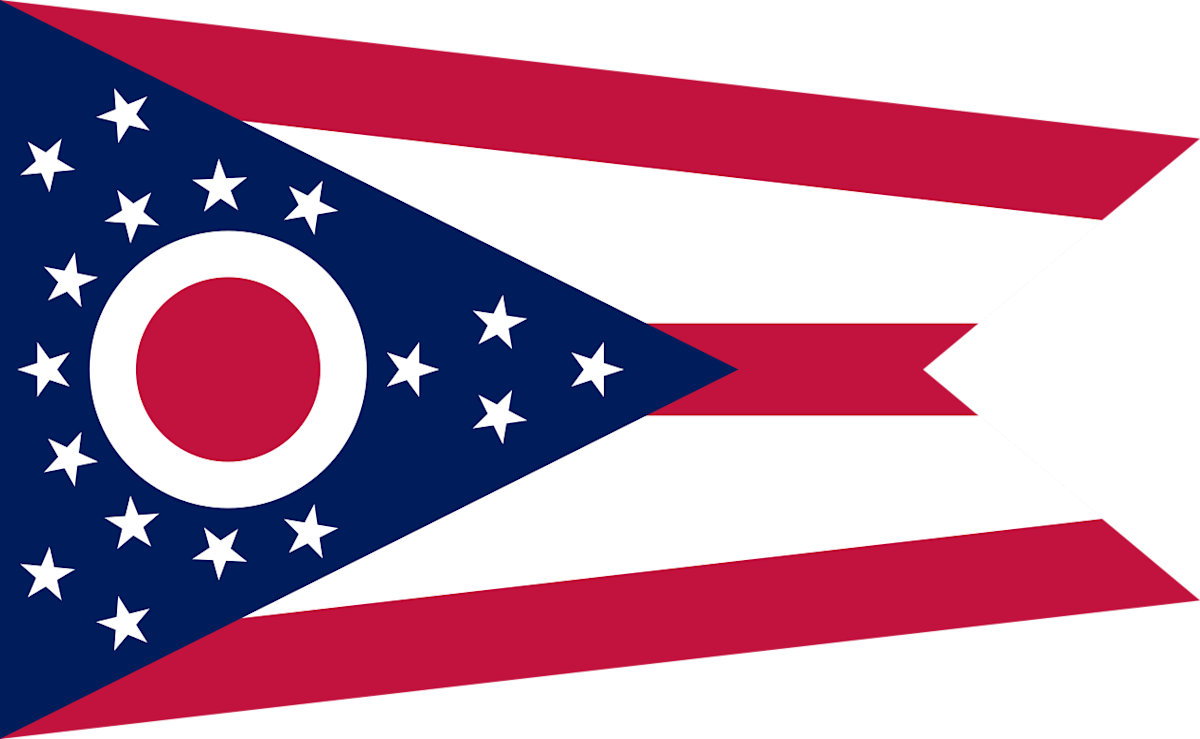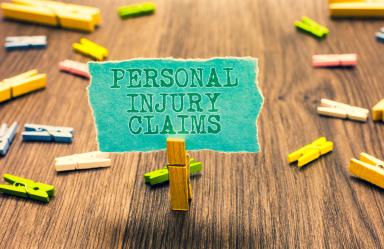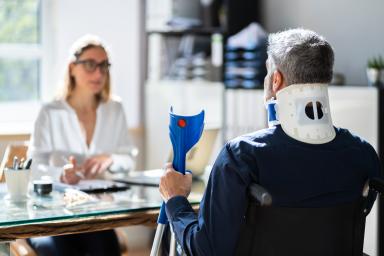Ohio Personal Injury Laws

According to the National Center for Health Statistics, accidents are the fourth leading cause of death in Ohio in 2021. A report released by the Ohio State Patrol for the same year showed that there had been more than 54,000 car accidents and nearly 1,300 fatal crashes. Another study had shown that Ohio ranked third nationwide among the state with the most accident-prone motorists, with 11.4% of drivers having an at-fault accident on their record, 29% higher than the national average.
Aside from vehicular accidents, medical malpractice also accounted for many personal injury cases in Ohio. Data released by the National Practitioner Data Bank showed that 1,347 medical malpractice reports were filed in Ohio in 2022, the fourth highest nationwide.
To safeguard the rights of its citizens, Ohio’s personal injury laws protect the rights of those who get injured and guide them when they seek compensation for their damages. This article will give an overview of these laws and provide a better understanding of Ohio’s judicial system when it comes to personal injury lawsuits.
Car Accident Laws in Ohio
When it comes to car accidents, Ohio follows the modified comparative fault rule. This means that if the plaintiff is partially at fault for the accident, they can only recover damages provided they are not more than 50% at fault. If the plaintiff is 51% or more at fault, they are barred from compensation. The amount that can be recovered by a plaintiff who is not more than 50% at fault will still be reduced by the percentage of their fault.
Required Car Insurance in Ohio
Ohio follows an at-fault insurance doctrine when it comes to financial responsibility for damages in a car accident. This means that the driver determined to be at fault is liable for compensating everyone who suffered damages from the crash. In this case, the victim may file a claim with the at-fault driver’s insurance carrier.
Car insurance is mandatory in the state, but the Ohio Department of Insurance provides drivers with the following alternatives to purchasing an auto insurance policy:
Obtaining a $30,000 bond from an approved insurance provider or surety;
Obtaining a $30,000 certificate of bond from the Bureau of Motor Vehicles, which must be signed by two individuals who have a minimum of $60,000 equity in their real estate
Obtaining a certificate of self-insurance from the BMV (applicable to entities who own more than 25 vehicles)
Plaintiffs can also file a claim with their own insurance company regardless of fault, who may, in turn, file a subrogation against the defendant’s insurance company.
DUI in Ohio
If the car accident that caused the injury falls under a DUI case, the intoxicated driver will be charged with aggravated vehicular assault. As a third-degree felony, the charge comes with mandatory prison time.
Plaintiffs should remember that the outcome of a DUI case is independent of their personal injury lawsuit. A DUI conviction does not automatically mean they will receive favorable compensation from the defendant’s insurance provider.
It is also worth noting that even though personal injury plaintiffs in Ohio are generally barred from seeking punitive damages, in some cases, an excessive blood alcohol concentration on the defendant may be enough grounds to award punitive damages.
Medical Malpractice Laws in Ohio
When filing a medical malpractice case in Ohio, the plaintiff must submit an affidavit of merit accomplished by a medical specialist along with their lawsuit. It is a document wherein the practitioner has made the following sworn statements:
The specialist is knowledgeable about the expected standard of care for the involved medical field;
The specialist has examined all the available medical records relevant to the lawsuit; and
The specialist has concluded that the plaintiff has been harmed by the defendant’s breach of standard care.
Ohio does not limit the compensation a plaintiff can recover in economic damages, but caps apply to non-economic damages. For cases wherein the malpractice has resulted in damage to an organ system, limb loss, or permanent injuries that hinder the plaintiff’s ability to care for themselves, the cap is $500,000. If there is more than one plaintiff, this value is raised to $1,000,000.
Discovery Rule in Medical Malpractice
Unlike most personal injury actions, plaintiffs only have one year after the date of the malpractice to file a claim. However, if the injury has not been immediately discovered, the statute of limitation begins on the date the victim discovers the injury. There is also a four-year statute of repose for medical malpractice cases, which means that plaintiffs only have a maximum of four years to file a lawsuit, regardless of when the injury was discovered.
Workers’ Compensation in Ohio
Ohio's workers’ compensation law falls under a no-fault system, which means that employees do not have to show proof that their employer is responsible for their injuries. However, in return for guaranteed coverage, employees can no longer sue employers for negligence and cannot be compensated for pain and suffering.
Workers’ compensation primarily covers wage replacement and the cost of medical care, such as surgeries, medications, rehabilitation, and doctor visits. It also provides relief for temporary and permanent total disability, as well as death benefits for the bereaved if the employee has passed away due to the injury.
Claims must be filed with the Ohio Bureau of Workers’ Compensation. Within 28 days after filing the claim, the Ohio BWC will notify the injured party whether the claim has been approved or rejected.
Exceptions to the No-fault System
Even though Ohio’s workers’ compensation policy falls under the no-fault system, certain circumstances may invalidate the injured employee’s claims. Being under the influence of drugs or alcohol when the injury is sustained is sufficient grounds for the BWC to deny a claim. A few more examples of situations not covered by the no-fault system are listed as follows:
Losses incurred while the employee is engaging in union activities
Injuries sustained during informal employee gatherings not sponsored by the company
Injuries from horseplay and violation of company policies
Self-inflicted injuries
Mental health issues stemming from toxic workplace conditions
Self-employed individuals are also generally exempt from most workers’ compensation coverage.
Product Liability Laws in Ohio
The Ohio Product Liability Act allows consumers to pursue legal action against the supplier or manufacturer of a product that has caused damage to them. Manufacturing and design defects are two common causes of product liability lawsuits, as these errors can lead to the product’s failure to work as intended.
Another common factor in this type of lawsuit is the lack of appropriate warnings and instructions. Consumers are usually not immediately aware of the risks associated with using a product and thus can contend that the product’s dangers were either not adequately communicated or not disclosed at all. The absence of instruction on the safe use of a product can also contribute to injuries.
The regular statute of limitations for product liability claims is two years, but plaintiffs can have more than two years if they were unaware that their injury was due to their use of the product. In the case of toxic chemical exposure, the statute of limitations only starts once the victim is made aware that their injury is due to the exposure.
However, product liability claims cannot be filed when 10 years have already passed since the product's purchase date, regardless of when the injury was discovered.
Premises Liability Laws in Ohio
In Ohio, property owners must maintain safe premises to protect the well-being of others. When pursuing a premises liability action, the plaintiff must be able to prove that the defendant had a duty to provide them with safe premises and that the defendant’s failure to uphold that duty has resulted in the plaintiff’s injury.
There are a few situations wherein the property owner may not be held liable. If the hazard that caused the plaintiff’s injury can be considered “open and obvious,” then there is a chance that the property owner will not be required to compensate the plaintiff.
Ohio locals should also remember that it is not the responsibility of property owners to alert people to dangerous ice and snow conditions. In this scenario, they can only be held liable if their property has installations that can contribute to unnatural ice or snow accumulation, such as drainage systems and gutters.
Liability for Dog Bites in Ohio
Under Ohio Revised Code §955.28, the owner of a dog is strictly liable for any actions of the dog which cause harm to others. The plaintiff does not need to prove negligence, as state laws recognize that dogs pose an innate public safety threat. However, if the victim can provide sufficient evidence that the dog owner had been negligent, they may receive higher compensation for punitive damages.
During a dog bite lawsuit, the defendant can raise the following defenses, which may diminish the plaintiff’s chances of recovering compensation:
The dog has been provoked by the plaintiff;
The plaintiff was trespassing or committing another crime at the time of the attack.
Dram Shop Laws in Ohio
Any business that sells alcohol to a visibly inebriated patron can be held liable for any injuries or property damages the overserved patron causes. Intentionally serving alcohol to minors is also an offense under this law. This law covers restaurants, bars, taverns, and other venues serving alcoholic beverages.
Plaintiffs in a dram shop action must be able to prove that the commercial establishment overserved the person who ended up causing harm. Failure to ask for or properly check an ID in the case of minors can also be grounds for a lawsuit.
Social Host Liability
Ohio Revised Code §4399.18, also known as social host liability, states that even employers and homeowners can be held liable for the actions of an employee or guest who left a gathering after being overserved with alcohol.
Ohio Business Liability Insurance Requirements
The Ohio Department of Insurance regulates all insurance offerings in Ohio. It requires all Ohio businesses to maintain two types of insurance: workers’ compensation coverage and commercial auto policies.
Workers’ Compensation Coverage
The mandatory workers’ compensation coverage for employers in Ohio has been in effect since 1912. The Ohio BWC is the state’s exclusive workers’ compensation coverage provider, except for approved self-insured employers. Employers must pay the organization an insurance premium to cover expenses caused by work-related accidents and injuries.
Commercial Auto Policies
If driving a motor vehicle is part of an employer’s business operation, they must carry commercial auto policies. Ohio law requires the following coverage minimums on all commercial auto policies:
$25,000 for each person injured in an accident;
$50,000 for all people injured in an accident;
$25,000 for all property damaged in an accident.
Commercial General Liability
Aside from the state-mandated insurance requirements, Ohio businesses may also carry commercial general liability insurance. It applies to accidents between a customer and a third-party non-employee within business premises and provides coverage for the following:
Third-party claims of personal injury and advertising injury
Liability for medical expenses
Attorney defense fees
How Much Can Someone Sue for an Injury in Ohio?
Ohio limits how much a plaintiff can receive after the defendant has been deemed liable for their injuries by a jury. The damages are divided into three categories:
Economic damages. These refer to quantifiable losses, such as medical bills, missed wages, and loss of earning capacity.
Non-economic damages. These refer to the compensation for pain and suffering endured by the plaintiff. For non-catastrophic accidents, non-economic damages are capped at $250,000 or three times the value of economic damages, whichever is higher. However, the compensation cannot go beyond $350,000 if there is one plaintiff or $500,000 if there is more than one plaintiff. There is no cap for this damage if the plaintiff has sustained a catastrophic injury, such as limb loss or significant physical deformation.
Punitive damages. These are applicable in cases where gross negligence has been proven. It is limited to twice the amount of economic damages.
The Statute of Limitations in Ohio
As defined by Ohio Revised Code §2305.10, the plaintiff has two years from the date of the injury to file a legal action. Exceptions can be granted under the following circumstances:
Legal disability. This applies to minors and those deemed by the court to be “unsound of mind,” in which case the statute of limitations will be paused until the disability is resolved.
Missing defendant. The statute of limitations may be put on hold if the defendant tries to hide or leaves the state and will only resume once they are found.
Discovery. This refers to cases wherein the injury is not immediately apparent after the incident. The statute of limitations will only begin once the injury has been discovered.
Legal Resources for Injured Folks in Ohio
Ohio State Bar Association
The Ohio State Bar Association has been helping the public with access to helpful legal information and services for more than 130 years. It promotes and upholds justice for all Ohio locals through its Advocacy Support Fund. The OSBA also advocates for consumer protection and no sales tax on legal services.
Legislative Service Commission
The Director of the Legislative Service Commission codifies Ohio’s laws and administrative rules. The website facilitates easy access to the state constitution, revised code, and administrative code.
Ohio Department of Public Safety
The Ohio Department of Public Safety provides locals with several services, such as crash report searches, salvage inspection scheduling, and distracted driving safety courses. It also provides a platform wherein citizens can report suspicious activities via the Safer Ohio App.
Community Legal Aid Services, Inc.
Community Legal Aid is a non-profit law firm focusing on low-income Ohio locals. It offers free and public workshops on a variety of legal concerns. Its services are also available to individuals and families impacted by the East Palestine Train Derailment.
Pro Seniors
Established in 1975, Pro Seniors is a nonprofit organization dedicated to senior citizens. It provides legal counsel on cases involving personal injury, civil rights, and consumer law. Pro Seniors also has a legal helpline wherein seniors can talk to a volunteer attorney about their concerns. Telephone appointments for the legal helpline are available on weekdays from 8:30 a.m. to 4:30 p.m.
If you are in the Cincinnati area, call 513-345-4160.
For those outside the calling area, the toll-free number is 800-488-6070.
Expertise.com StaffAuthor
Step into the world of Expertise.com, your go-to hub for credible insights. We don't take accuracy lightly around here. Our squad of expert reviewers, each a maestro in their field, has given the green light to every single article you'll find. From rigorous fact-checking to meticulous evaluations of service providers, we've got it all covered. So feel free to dive in and explore. The information you'll uncover has been stamped with the seal of approval by our top-notch experts.




